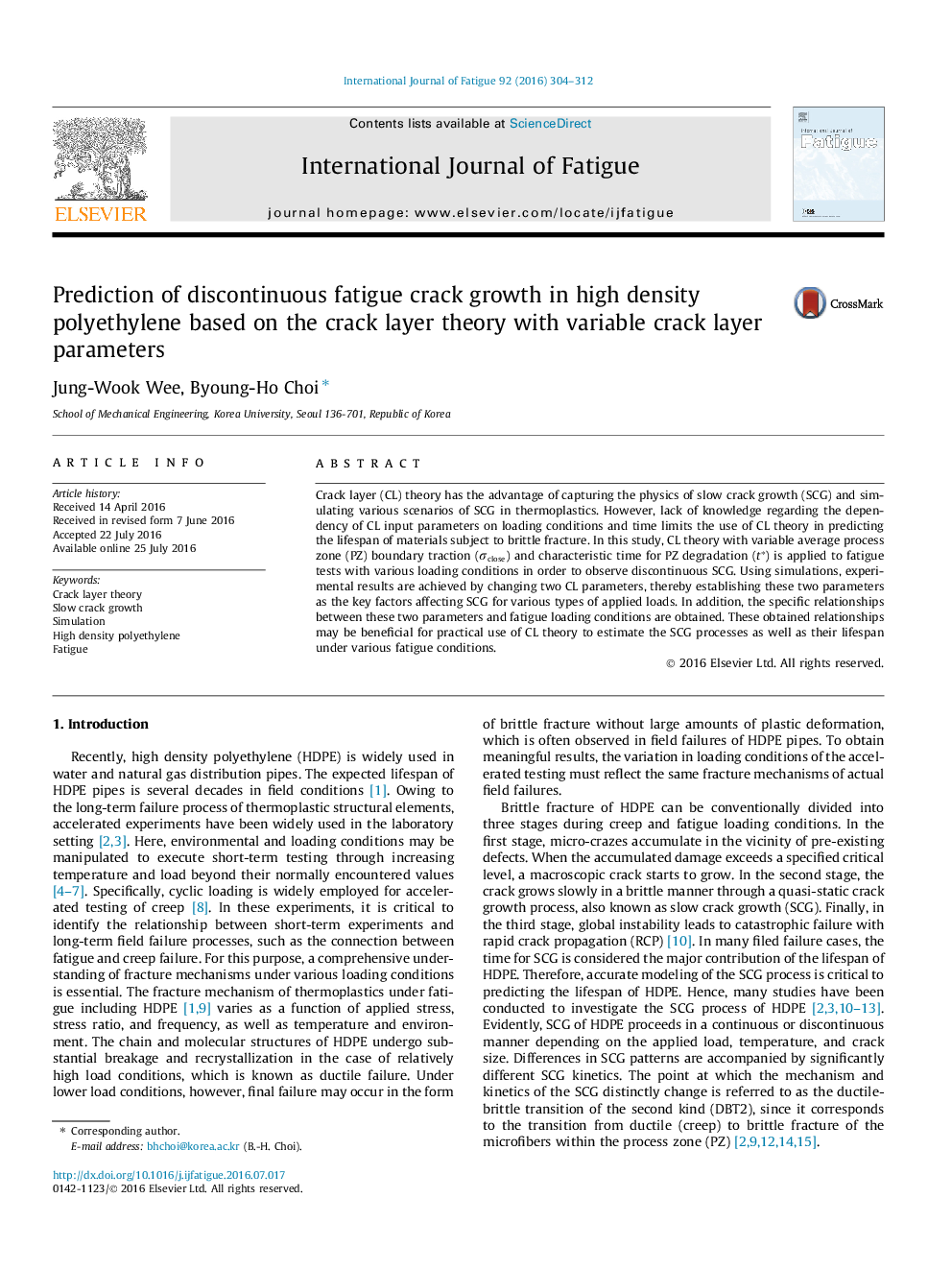| کد مقاله | کد نشریه | سال انتشار | مقاله انگلیسی | نسخه تمام متن |
|---|---|---|---|---|
| 774782 | 1463736 | 2016 | 9 صفحه PDF | دانلود رایگان |
• Discontinuous crack growth of HDPE is simulated successfully based on CL theory.
• Variation of two key CL parameters is investigated for various loading parameters.
• The effect of CL parameters on the crack growth behavior of HDPE is examined.
• Lifetime of HDPE for various loads is accurately predicted by varying CL parameters.
Crack layer (CL) theory has the advantage of capturing the physics of slow crack growth (SCG) and simulating various scenarios of SCG in thermoplastics. However, lack of knowledge regarding the dependency of CL input parameters on loading conditions and time limits the use of CL theory in predicting the lifespan of materials subject to brittle fracture. In this study, CL theory with variable average process zone (PZ) boundary traction (σcloseσclose) and characteristic time for PZ degradation (t∗) is applied to fatigue tests with various loading conditions in order to observe discontinuous SCG. Using simulations, experimental results are achieved by changing two CL parameters, thereby establishing these two parameters as the key factors affecting SCG for various types of applied loads. In addition, the specific relationships between these two parameters and fatigue loading conditions are obtained. These obtained relationships may be beneficial for practical use of CL theory to estimate the SCG processes as well as their lifespan under various fatigue conditions.
Journal: International Journal of Fatigue - Volume 92, Part 1, November 2016, Pages 304–312
